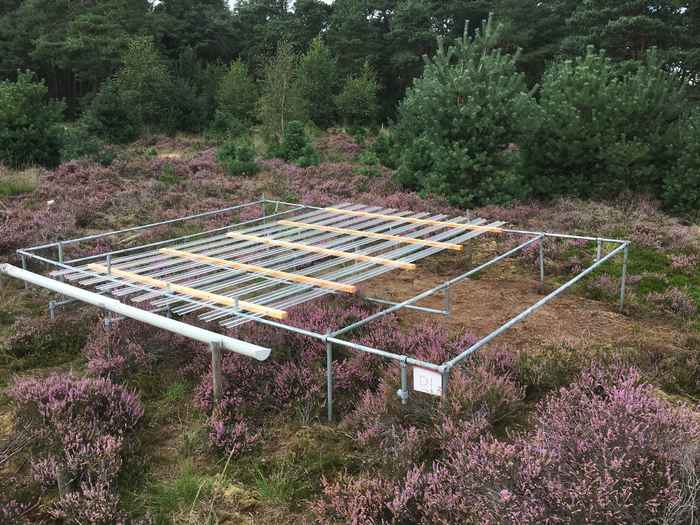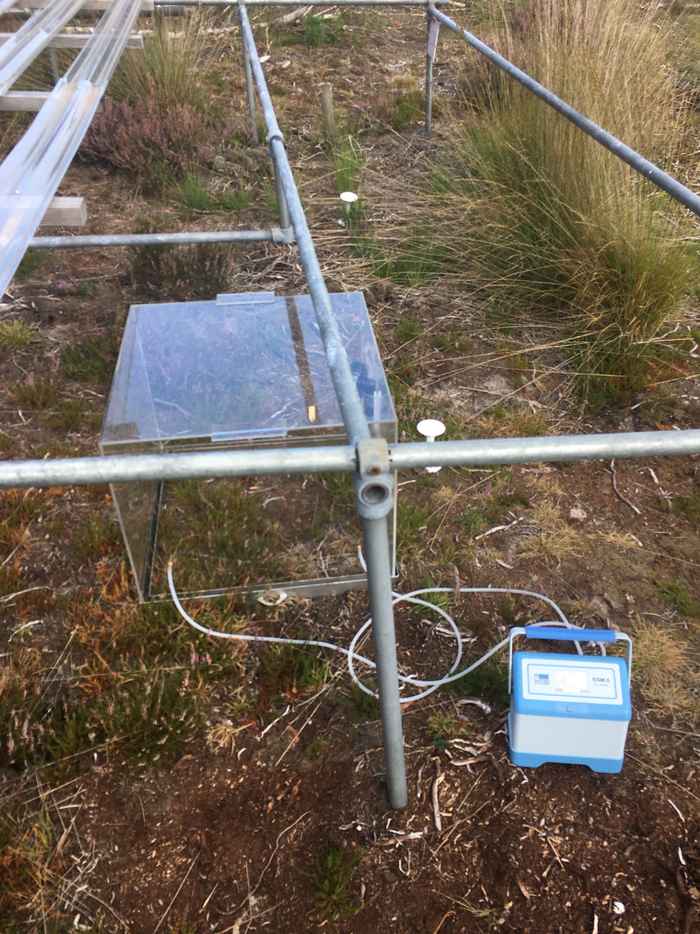Prolonged drought has a major impact on heathland vegetation and soils
10 September 2025

Droughts affect ecosystems in numerous ways. For example, some plants are better able to adapt to drought than others, which can change the composition of the vegetation. Drought also affects the composition of microbial communities in the soil, and thus, among other things, the decomposition rate of dead plant matter and the amount of nutrients released from it. Moreover, a self-reinforcing effect can occur: plants that grow more slowly absorb less carbon dioxide (CO2) from the air, and the altered soils can also sequester less carbon or even become a net emission source of CO2. This then leads to an intensification of the greenhouse effect, and thus to more or longer periods of (severe) drought.
Long-term
Many scientific studies on the effect of drought on ecosystems look at the short-term effects of individual droughts. Biologists from the Institute for Biodiversity and Ecosystem Dynamics (IBED) at the University of Amsterdam decided 25 years ago to approach this differently: they initiated a long-term experiment in a Dutch heathland area to investigate the impact of drought on these vulnerable ecosystems. Heathlands are struggling in our country because high nitrogen deposition causes grasses to outcompete heather plants. The influence of climate change, including more and more severe periods of drought, adds to this.
For their newly published results, De Vries, Gliesch and their team examined what happens when heather is given a few years to recover after a prolonged drought, and compared that response to heather still exposed to drought. They compared the effect on young heather plants, on a patch of heathland mown in 2020, with the effect on older heather plants. They also examined the composition of the bacterial and fungal communities in the underlying soils.

Surprising
‘One of the most striking things we discovered is that drought causes long-term changes in the soil microbial community,’ says De Vries. ‘We already knew from previous experiments that drought often causes fungi to dominate, at the expense of bacteria. There is also a shift in which species dominate. To our surprise, this turns out to be a long-lasting effect. Even when we gave the heathland a five-year recovery period, without a major drought, the microbial community in the soil did not recover.’
The team expected that this changed microbial community would influence how much CO2 the heathland system absorbs and stores. De Vries: ‘Surprisingly, that wasn't the case. Neither during the first period of prolonged drought, nor during a second period of drought after the recovery phase. The vegetation that is present in this type of heathland appears to have a much greater influence on how much carbon the system absorbs and stores than the composition of the microbial community in the soil.’
Young vs. Old Heath
The team did find that drought changes the vegetation, with clear differences in the impact of droughts on young versus old heathland plants. Gliesch: ‘We clearly saw that young heathland is more drought-resistant than old heathland. In both young and old heathland, the system was strained, and the heather plants grew less, but this effect was greatest in the old heathland. Moreover, after the recovery phase, the young plants appeared to be much more resilient to the new period of drought than the older plants. We suspect that the young plants adapted better during that first phase, for example by developing deeper roots.’ In the old heathland, the area of heather plants decreased most significantly during the second drought. The old heathland also showed the greatest change in CO2 uptake.
De Vries summarizes: ‘A very important finding is that prolonged drought changes plant and soil communities so drastically that they don't recover, and that prolonged drought causes plants and soils to absorb and sequester less CO2. Because of this reduced CO2 absorption, drought therefore contributes to climate change. To preserve heathland and stimulate CO2 absorption, it's important to implement heathland management aimed at regularly rejuvenating the heathland.’